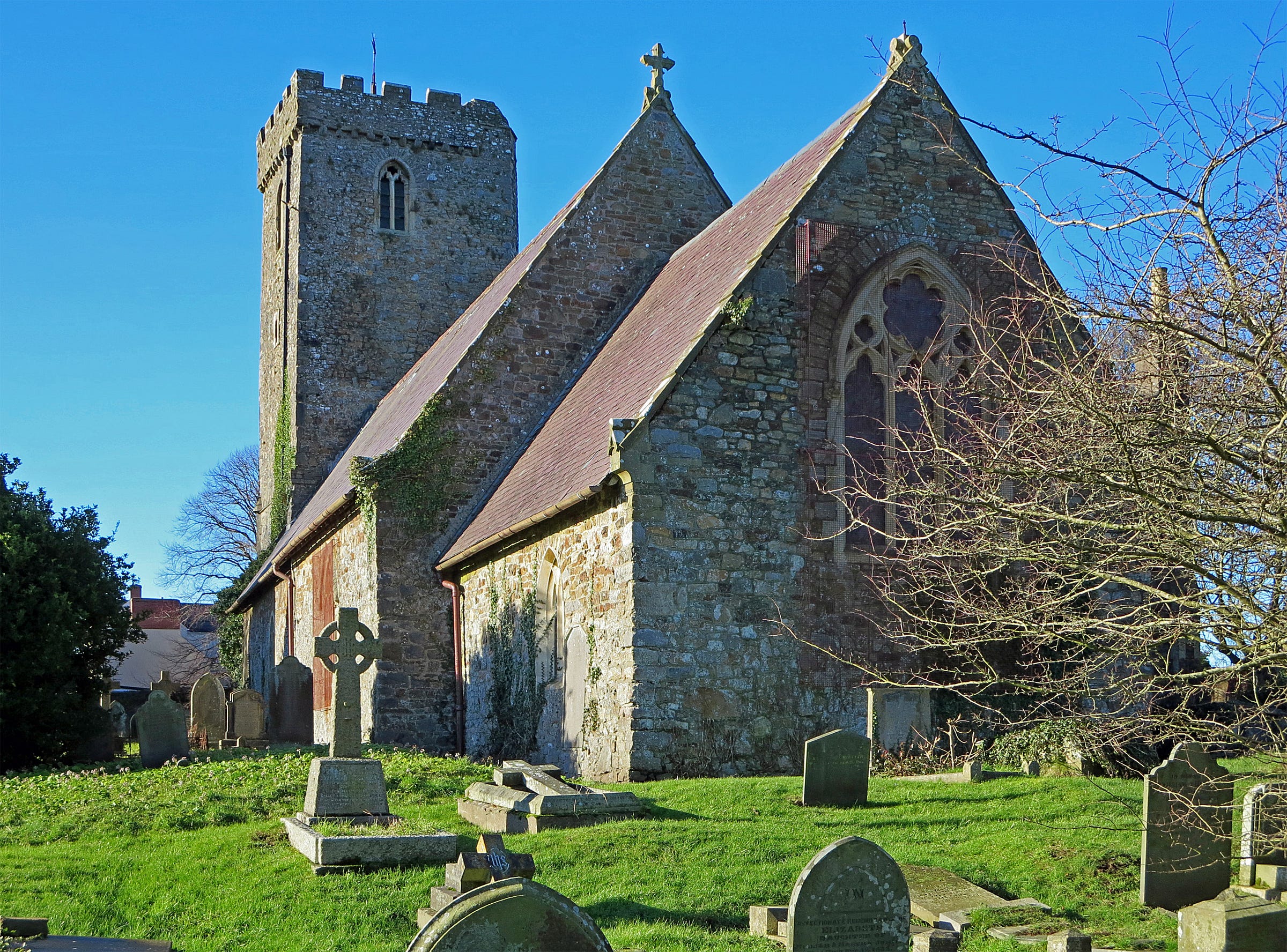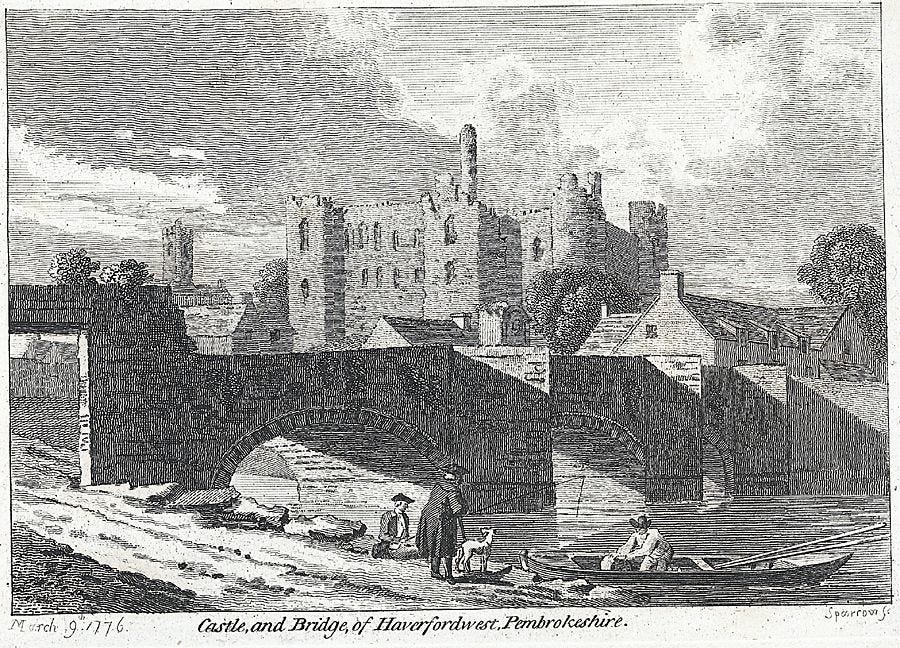Haverfordwest
My One-Place Study choice was the birthplace of my great-great-grandparents, John Taylor and Martha Lloyd, and their last home in Wales before a journey that took them to our home in Australia.

Our guest, writes for her family storytelling publication and has returned to join us for this All About That Place cohort of the Projectkin Members’ Corner. Monthly posts from members celebrate their contributions to family history storytelling — in all its forms. Posts may be written or recorded (audio or video) will be shared for free each month. Explore the entire Members’ Corner here.
My study of Haverfordwest began while researching Axedale, a tiny town in Victoria, Australia, which was my first One-Place Study. As a passionate family historian, I sensed that the hamlet held countless stories from its golden past. I launched a One-Place Study of the area, hoping to uncover and preserve its history. See Axedale, Then and Now. During the gold rush era, this sleepy hamlet was a bustling hub with five hotels, a bakery, a dairy, and various stores. When I moved away just a year later, my study was passed to another keen historian, and I began searching for my next One-Place Study location.
Choosing the right place wasn’t easy. I couldn’t decide for over a year and changed my mind many times. The announcement of a One Place Study conference in 2023 gave me the push I needed, but I still needed to choose my place. Should I focus on a nearby town that is accessible for on-the-ground research? Or should I look at a town of one of my ancestors' faraway origins? Ultimately, I opted for the latter and chose the city of Haverfordwest in the county of Pembrokeshire, Wales.
About Haverfordwest
Haverfordwest is the main town of the county of Pembrokeshire in Wales. The very attractive and ancient town has a very rich history. Due to its position on the Western Cleddau River, it was once the second-largest port in Wales. It remained a very important port until the arrival of the railway in 1853.

Haverfordwest is special to me, as it is the birthplace of my great-great-grandparents, John Taylor and Martha Lloyd. They were both born there and married in the town at St. Thomas parish church in 1839. Their first two children, James and John, were also born in Haverfordwest.
In 1840, the family emigrated to Australia. I know little about their life in Haverfordwest beyond their birth and marriage records. I have often wondered why they decided to pack up their young family and move to the other side of the world. They would have known very little of the life they would be facing in the new world.
I am diving into this study because of this gap in my knowledge. By uncovering the history of Haverfordwest, I hope to gain a deeper understanding of my ancestors’ lives before they left for Australia.

10 Quick Facts About Haverfordwest
Haverfordwest, or Hwlffordd in Welsh, means ‘ford used by heifers’ or ‘ford used by goats,’ pronounced ‘Harford’ locally. ‘West’ was added later.
The Population in 1831 was 4,328. In 2011, 14,596 people resided in the city.
The temperatures average a high of 15°C and a low of 10°C. The average annual rainfall is 103.9mm, and humidity averages 85%. The hottest month is usually July, and the coldest Month is February.
Haverfordwest has been a market town for over 300 years, with people coming from miles around to trade. Today, the city is Pembrokeshire’s main commercial and retail centre.
The city is overlooked by the historic Haverfordwest Castle, which dates to 1120. Parts of the castle are still standing today.
In the 16th century, Haverfordwest was Wales’ second largest port and remained the main port of West Wales until the railway arrived in 1853.
Though it is believed that Haverfordwest emerged in the early 12th century, archaeological evidence suggests earlier settlements dating back to the Roman and Iron Ages.
The Haverfordwest Priory was built by Augustinian monks in the 13th century just outside the town wall. The ruins of the priory still stand.
In the 19th century, Haverfordwest had three parishes: St. Mary, St. Thomas, and St. Martin.
The River Cleddau runs through the heart of Haverfordwest.
I’m currently engrossed in transcribing the 1841 census for St. Thomas parish, the parish of my ancestors. My research is uncovering friends and neighbours of my ancestors. While this research is being collated, I will share articles from 19th-century newspapers and burial records on the blog. These records are just the start of the story of Haverfordwest.

What is a One Place Study?
A One Place Study plays a significant role in family history research by providing a deep, contextual understanding of the environment in which ancestors lived. Unlike traditional family history, which focuses on tracing ancestors and documenting individual lives, a One-Place Study focuses on the history of a specific location over a period of time. The location could be a village, town, parish, or even a single building. I have even seen a One-Place Study of a 19th-century passenger ship.
The study of a place can paint a detailed picture of the area’s geography, the people who lived there, their community activities, education, employment, and businesses. Everything that shaped the place over time can be included. Below are just a few ways in which a One-Place Study can complement and enrich your family history research:
By studying the broader history of a place, a One-Place Study helps to uncover how the local environment, economy, social structures, and events influenced the lives of the people who lived there. This provides a richer understanding of our ancestors' daily lives beyond names and dates.
Connections between families can be revealed, showing how neighbours, employers, and community leaders interact. Understanding these relationships can sometimes lead to discovering new family tree branches. This information can also explain migration patterns.
A One-Place Study can fill in the gaps in areas where family records are difficult to find. For example, if direct records about an ancestor are missing, records about their community, such as church records, property transactions, or school attendance lists, could provide indirect evidence about their lives.
It’s possible that previously unknown ancestors or relatives could be found. Researchers might uncover new information about their family members by studying local records and archives.
A One-Place Study can help explain why ancestors might have left their place. Whether it was economic hardship, political unrest, or perhaps environmental factors, understanding the historical context of an area and your family could make it clearer why your family decided to move, emigrate, or change professions.
The study might also show where others from the same area moved, providing clues about where to look for records if a family suddenly disappears from local documents.
My one-place Study of Haverfordwest will focus mainly on its pre-19th-century history, using old newspaper articles, official records, photos, and family stories.
This post is part of our special All About That Place cohort for the Members’ Corner, but these posts are released each month. Our next opening is for October with a deadline of the 21st of the month. Do you have a story to tell? We’d love to share your work. Learn more:
Join Projectkin in the Members’ Corner
I brought Projectkin to Substack because of the rich community features of the platform. Three months in, our community has bloomed. We’re thriving with a focus on creative project ideas as a way to share our stories:










A One-Place Study sounds like it will unearth fascinating stories. Good Luck!
Hello Jennifer, How delightful to see your story shared here about the One-Place Study of Haverfordwest! This town features in my maternal heritage, and I was drawn to the place after my visit there some years ago. Walking into St. Mary's Church, where my great-great-grandparents were married, felt like coming home. Specific family names relevant to Haverfordwest and surrounding villages, include Evans, Day, and Purser. I remember a breakthrough moment in my genealogy research when we found the marriage banns for David Evans and Lettice Day, dated 01 Jul 1828, at St. Mary's church. I have a story of Lettice here:
https://app.weare.xyz/public/cutting-robinson-line/articles/roe55hm995e9